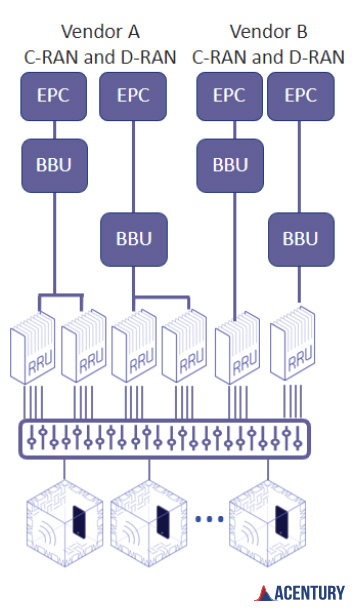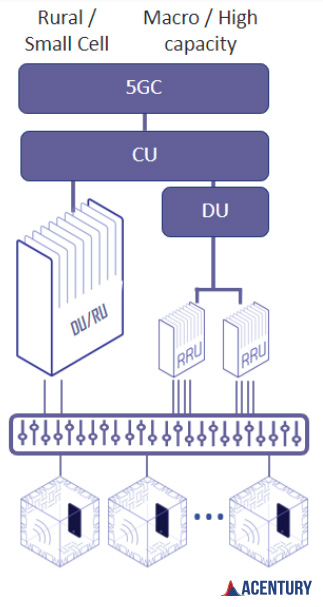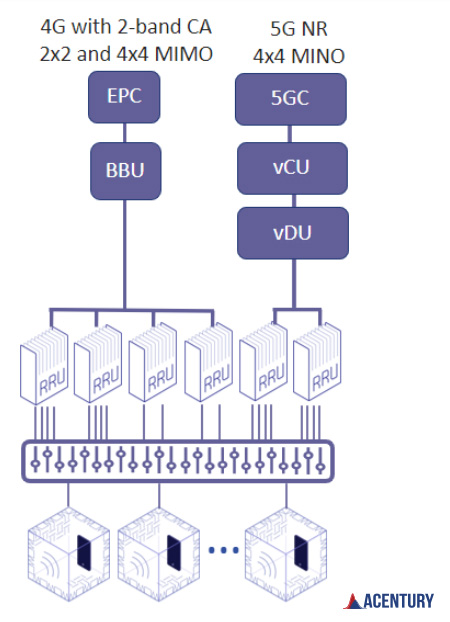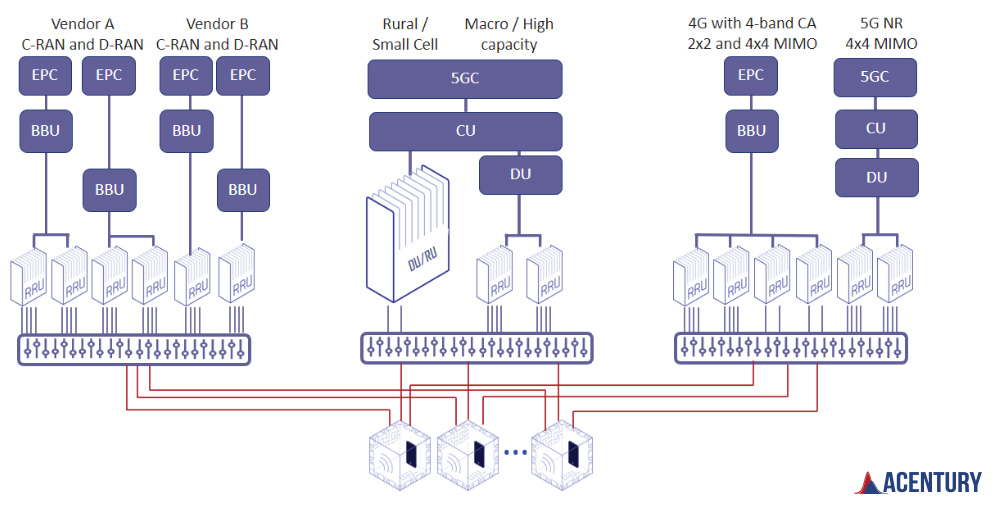
Examining How a Mirror Lab Can Replicate and Test Production 4G and 5G Networks Simultaneously
In this blog post we are going to review three configuration examples of lab architecture that mirror the production environment of a mobile network. The first is an operator who wants to be able to test their two-vendor 4G implementation in the lab, where each vendor uses two different configurations.
Vendor A is used in high density areas with two carrier aggregation with both C-RAN and D-RAN configurations. Vendor B is used for lower density sites, likely rural areas with a single carrier, also composed of both C-RAN and D-RAN configurations.

The next example is a 5G operator that's replicating their dual split implementation in the lab. The left branch of the architecture is a 5G site with a split 2 configuration, which is suitable for delivering service in places where the midhaul performance isn't great, like a rural area. It could also be used for delivering higher capacity services where you need some baseband processing near the edge such as high traffic areas or serving in-building services. The right branch of the architecture is a 7-2 split using mid-band spectrum as there is 4x4 MIMO here used for wider area coverage needs.

The third example is an operator that has both 4G and 5G networks running simultaneously and wants to replicate interoperability. The 4G network has a combination of 4x4 MIMO sites and some 2x2 MIMO sites that represent a mix of high and low-density deployments. The 5G network is split 7-2 which is reasonably cost-effective architecture especially with the virtualization of the CU and DU network workloads. It's possibly a 5G overlay to a 4G network.

These mirror lab implementations are set up to allow the testing of all types of customer services on each of their network configurations including the actual RF designs that exist in the field. They enable roaming and Handover testing between and among any combination of the operator site configurations. The number of RF Shield boxes determines the number of simultaneous tests and each of them can share all the same network resources.
These aren't the only options - the combinations are almost endless - but the idea is to implement a representative sample of the production environment in the lab so that real world scenarios can be tested and performance validated. To expand on the examples we could imagine an even more sophisticated mirror lab that combines all network architectures together by combining the outputs of the various switch matrices together into the same set of RF chambers.

We can replicate a single network with all these different configurations and implementations. The user equipment in these shield boxes can make calls and be handed off between any of these networks.
- To learn more about how the overall LAMTA architecture and how this could be used to construct a mirror lab, click here
- Contact Us if you have any further questions by reaching out to us HERE
Have a question or comment?
We'd love to hear it. Fill out our General Inquiry Form or reach us directly at: info@acentury.co
CONTACT US